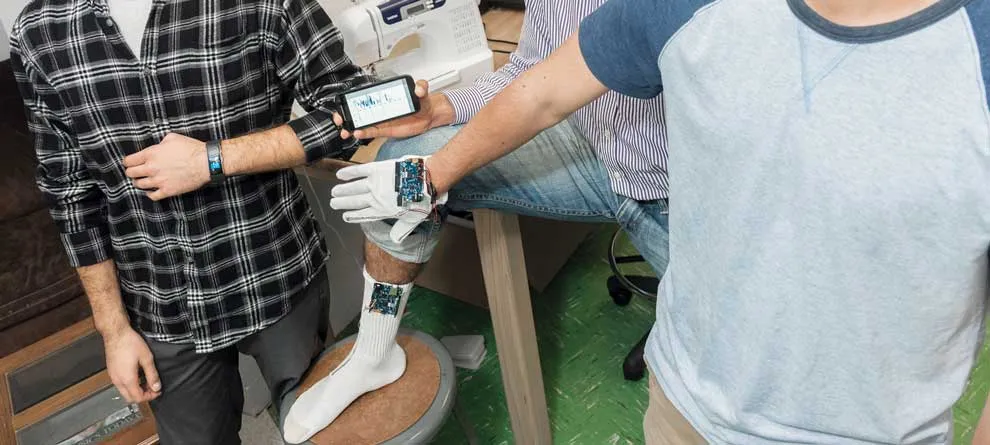
Bright Ideas in Research
1. A website analyzes facial muscle movement to detect PD symptoms.
Restricted facial expression is an early symptom of PD. What if facial-recognition software could help with a diagnosis? Leave it to a high school student in Kansas to find the answer. Science star Erin Smith has been working to develop FacePrint, an app that recognizes biomarkers, or differences in facial muscles, to detect those displayed by Parkinson’s patients.
Smith's site uses a computer’s camera to analyze movement and compare the data with other subjects, with the goal of providing early and inexpensive detection. The Michael J. Fox Foundation for Parkinson’s Research launched the web-based study through its Fox Trial Finder: foxtrialfinder.michaeljfox.org/trial/4726.
2. Textiles interwoven with sensors can monitor movement in the wearer.
Researchers at the University of Rhode Island are developing “smart” clothes such as gloves and socks that are made from textiles interwoven with electronics. The gloves have embedded sensors that measure symptoms like tremors and rigidity, and are connected to a smartphone that records data and delivers it to doctors who can monitor treatment while the patient remains home. The socks evaluate a person’s gait, noting movement that might indicate a need for therapy.
The university is working to partner with companies that can create these products, which have the potential to improve a patient’s quality of care.
3. Mesh electronics in the brain may alleviate tremors and other symptoms.
A new device—mesh electronics made from polymer—may revolutionize treatment for Parkinson’s disease. The wire meshes, which are thin and flexible enough to be injected by a needle, are connected to a computer that delivers electrical jolts to alleviate symptoms of Parkinson’s, such as tremors. The rigid implants currently used in deep brain stimulation (DBS) can degrade over time because of chronic tissue damage. This does not occur with mesh electronics, however. Developed by Harvard chemist Charles Lieber, the mesh stimulates individual neurons as well as measures the activity of neurons, which is a groundbreaking advancement in this area.
Originally printed in MoreThanMotion, Winter 2017.




